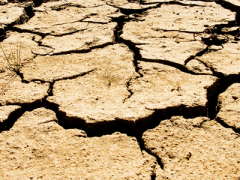Micronutrients: a looming concern for Sub-Saharan agriculture
A PBL study explores how a lack of soil micronutrients puts countries in Sub-Sahara Africa at risk. A range of metals and minerals is essential to sustainably increase agricultural production. Though needed in small quantities, they are not substitutable in plant growth, and deficiencies jeopardize healthy human development. Required volumes are often modest compared with global annual production, but countries are nonetheless vulnerable to supply restrictions. Various policy options exist, but the optimal mix is country-specific.
The study was part of a multi-year covenant between PBL and the Foreign Aid Department of the Netherlands Ministry of Foreign Affairs. ISRIC – World Soil Information developed the novel database on soil nutrient densities.
Challenges for agriculture in Sub-Saharan Africa
The challenges to increase production and productivity in the region are pronounced. Consumption is projected to increase rapidly to end hunger and adequately feed a growing population. Yields much higher than the current low averages are required to reduce deforestation and loss of other natural land. Improved yields are also key for agricultural livelihoods and overall economic development.
Estimating potential demand of micronutrients
To sustain a future pathway of sustainable agriculture, multiple measures and incentives are indispensable. The role of micronutrients remains underexposed to date, but warrants more attention. To estimate how much micronutrients are needed, two components add up to the total. The first is the one-time amount needed to supplement current deficits in the soil, which hampers plant growth. The second serves to replenish the annual flows of micronutrients exported from fields embedded in harvested products and crop residues. Uncertainties in key relations along the chain from soil to harvested products are reflected in ranges for each element considered.
Supply risks and vulnerability
For most elements, manganese, potassium and magnesium being the exceptions, the total amount estimated is modest compared with global production volumes. But, supply risks, an indicator capturing the odds of disruptions in global supply, are relatively larger for zinc and manganese. Moreover, countries in the region are vulnerable to supply restrictions to varying degrees. Restrictions can arise from competing sectors and world regions, and high and fluctuating market prices. The vulnerability, per element and per country, varies with domestic mining capacity, foreign currency reserves and the share of agriculture in their national economy.
Policy options to reduce micronutrient risks
Each country will require a different mix of financial and other interventions to reduce the risks. Three key focus areas for policy-making are:
- Use of micronutrients to be kept as low as possible, for example by substitution in non-agricultural sectors, and by recovery, recycling and avoiding losses in all sectors;
- Public and private research for development of innovative fertilizer products, supported by field trials and data collection;
- More affordable fertilizer prices for farmers, and where instrumental mandatory application of micronutrients.
More information and selected further reading
- Downloadable maps of soil (micro)nutrient densities in Sub-Saharan Africa
- Infographics on the role of soil micronutrients
- Development of fertilizer products enriched with micronutrients: Virtual Fertilizer Research Center (VFRC) and International Fertilizer Development Corporation (IFDC)




